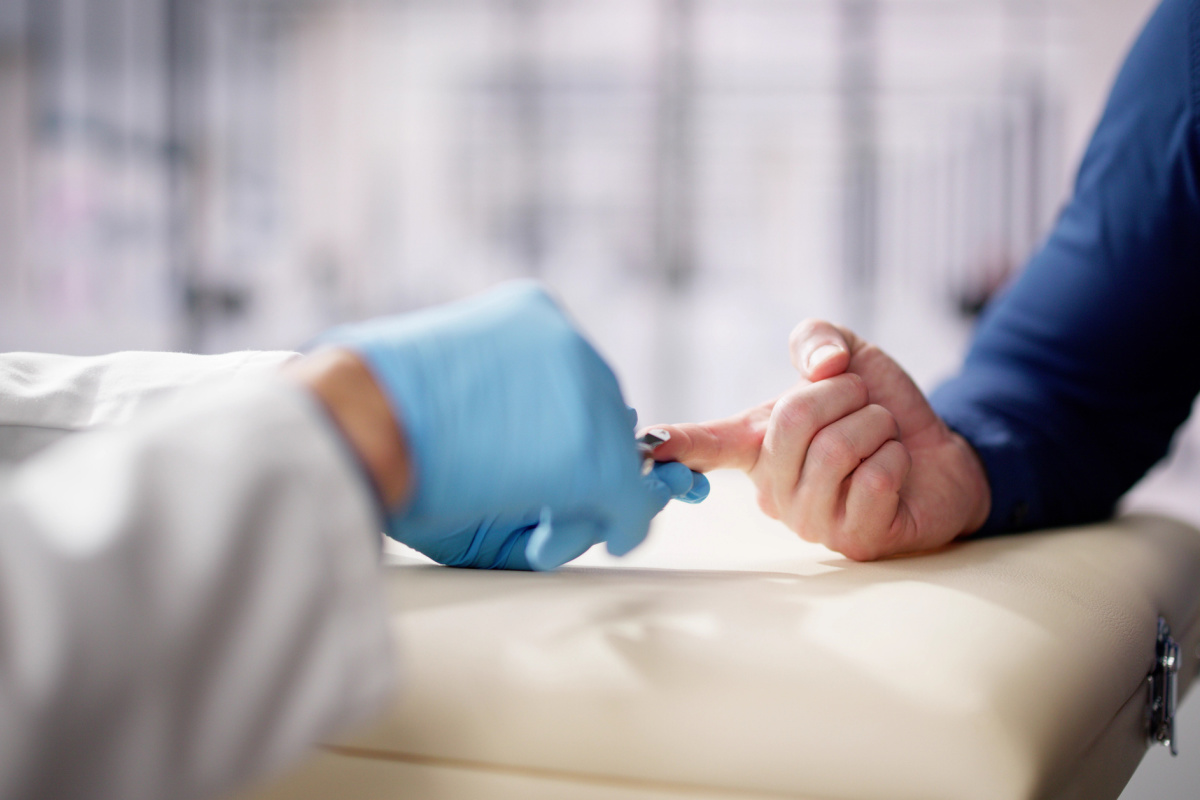Here’s follow-up from a blog we posted in 2013. It was titled “Preventing a Lawsuit – Always Seek Consent Before Searching a Patient’s Anus”. Now we know its full title should have included “Part 1.” Two doctors were among many defendants sued by the American Civil Liberties Union. To recap this madness, see below. The outcome follows…
Drs. Michael Parsa and Christopher Cabanillas are employed by University Medical Center of El Paso. They are two of numerous defendants in a lawsuit filed by the ACLU. Even though they are hospital employees, they are being sued in their individual capacity.
The plaintiff, Jane Doe, is a 54 year old New Mexico resident. She was visiting a family friend in Juarez, Mexico. On return, she crossed the bridge back to the US, where she was chosen at random for “additional screening.” This “secondary inspection” involved a pat-down where an agent “inserted her finger into the crevice of Ms. Doe’s buttocks.” Nothing was noted. But, that was not the end of this search.
Ms. Doe was instructed to stand in line with other people selected for “additional screening.” Next up. A drug detection dog which sniffed the people in the lineup. Note: The Supreme Court has held that a court can presume a search is valid if police say it was based on an alert by a dog trained to detect drugs.
According to the lawsuit, the dog handler “hit the ground by her feet, but did not hit the ground by any of the others in the line,” and “the dog responded by lunging onto Ms. Doe and landing its front paws on her torso.” This false positive alert was the basis for all that followed.
The agents stripped search the plaintiff, examining her vagina and anus with a flashlight. Finding nothing, the lawsuit stated they transported her in handcuffs to University Medical Center of El Paso. One of the agents informed Ms. Doe they needed to monitor her bowel movement. Ms. Doe asked agents if they had a warrant. One responded they did not need a warrant.
Ms. Doe was handcuffed to the exam table.
“Medical Center staff wheeled a portable toilet into the room and directed Ms. Doe to ingest a laxative. [Border patrol] agents Portillo and Herrera … remained in the room with her while the laxative took effect. The agents observed Ms. Doe have a bowel movement. No evidence of internal drug smuggling was found as a result of this search.”
More allegations from the lawsuit:
“Defendant Cabanillas, in consultation with Defendant Parsa, ordered an X-ray of Ms. Doe’s abdomen. Medical Center staff X-rayed Ms. Doe, subjecting her to unnecessary radiation. According to medical records, the exam produced “[n]o evidence of radiopaque foreign bodies.”
“Defendant Parsa entered the examination room and barked an order that Ms. Doe spread her legs. She complied.”
“Defendant Parsa then conducted a series of examinations. While [Border Patrol] agents and other Medical Center staff watched, he inserted a speculum into Ms. Doe’s vagina and observed the interior cavity. According to medical records, Defendant Parsa did not see any foreign objects or evidence of internal drug smuggling.”
“Defendant Parsa also stuck his fingers into Ms. Doe’s vagina while palpitating (sic) her abdomen. This bimanual cavity search was negative: According to medical records, Defendant Parsa did not feel any foreign objects or evidence of internal drug smuggling.”
“Defendant Parsa also conducted a rectal examination: he inserted his fingers into Ms. Doe’s rectum and probed the orifice for foreign bodies. According to medical records, Defendant Parsa did not feel any or find evidence of internal drug smuggling.”
“Defendant Cabanillas, in consultation with Defendant Parsa, ordered a CT exam of Ms. Doe’s abdomen and pelvis. During the CT scan, Medical Center staff barraged Ms. Doe’s body to create a three dimensional image with more detail than a typical X-ray. In so doing, they forcibly exposed her to “between 150 and 1,100 times the radiation of a conventional x-ray, or around a year’s worth of exposure to radiation from both natural and artificial sources in the environment.” According to medical records, the exam resulted in “[n]o . . . evidence of ingested radiopaque objects.”
“After the CT scan, a [Border Patrol] agent presented Ms. Doe with a choice: she could either sign a medical consent form, despite the fact that she had not consented, in which case [Border Patrol] would pay for the cost of the searches; or if she refused to sign the consent form, she would be billed for the cost of the searches. She refused. The Medical Center consent form reflects that Ms. Doe withheld consent: “Refusal to Sign” is written in the patient signature line, a refusal witnessed by Jessica R.’
Ms. Doe received a bill from the hospital for $5,000 and she has refused to pay.
Fast forward.
Customs and Border Protection will pay Jane Doe $475,000 to settle the lawsuit. The lawyers won a $1.1 M settlement to settle claims against University Medical Center of El Paso. Under the terms of the agreement, the ACLU will send advisory letters to hospitals from San Diego to Houston, putting the institutions on notice of their rights and responsibilities. Further, hundreds of Customs and Border Protection agents will undergo retraining.
The letters sent to hospitals state:
“Your staff should know that CBP agents have no authority to compel healthcare professionals to assist in law enforcement searches. CBP policy absolutely forbids CBP officers from pressuring, cajoling, or otherwise requesting medical personnel to conduct medical examinations of individuals under their custody. The [CBP] Handbook states that, when a person arrives at a medical facility, “medical personnel make all medical decisions.”
So there you have it. If you are asked by a federal agent, against its written policy, to perform a cavity search on a detainee, and there is no judge-signed warrant, you do not have to bend over and take it. Being a little too helpful here can turn into an expensive lesson, even before the Board of Medicine takes notice.
What do you think?





